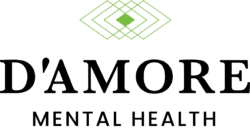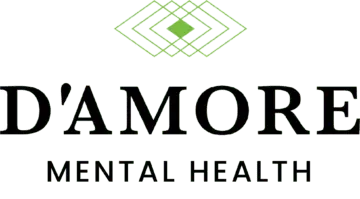When seeking mental health treatment, the path to healing looks different for everyone. One approach that has shown significant benefits for many individuals is gender-specific mental health treatment—therapeutic environments where housing and certain group therapy sessions are separated by gender. While not every aspect of treatment needs to be gender-specific, incorporating gender-focused elements can create a more comfortable, effective healing environment for individuals addressing complex mental health challenges.
Understanding how gender influences mental health experiences, treatment needs, and recovery outcomes can help individuals make informed decisions about the type of care that will best support their journey toward wellness.
What Is Gender-Specific Mental Health Treatment?
Gender-specific mental health treatment refers to therapeutic programs that incorporate separate housing accommodations and dedicated therapy groups for men and women. This approach recognizes that while mental health conditions affect people of all genders, the way these conditions manifest, the underlying causes, and the most effective treatment approaches can differ significantly between men and women.
In gender-specific treatment settings, individuals benefit from:
- Gender-specific residential housing that provides a safe, comfortable living environment
- Dedicated therapy groups where participants can explore gender-related experiences and challenges
- Specialized clinical approaches that address gender-specific mental health concerns
- Peer support from others who may share similar life experiences and perspectives
It’s important to note that gender-specific elements complement comprehensive treatment programs. At facilities like D’Amore Mental Health, while residential housing and certain therapy groups are gender-specific, individuals still receive individualized counseling, family therapy, and access to the full range of evidence-based treatment modalities including DBT and cognitive behavioral therapy.
The Psychology Behind Gender-Specific Treatment
Research in psychology and neuroscience has revealed important differences in how men and women experience, express, and process mental health challenges. These differences aren’t absolute—there’s tremendous individual variation within any gender—but understanding common patterns helps treatment providers offer more targeted, effective care.
Biological and Neurological Factors
Hormonal differences between men and women can significantly influence mental health. According to the National Institute of Mental Health (NIMH), women experience hormonal fluctuations related to menstrual cycles, pregnancy, postpartum periods, and menopause, all of which can impact mood regulation and mental well-being. Conditions like postpartum depression and premenstrual dysphoric disorder are gender-specific mental health concerns that require specialized understanding.
Men’s hormonal profiles, particularly testosterone levels, also influence mental health, affecting mood, energy, and emotional regulation in distinct ways. These biological realities mean that medication management and holistic treatment approaches may need gender-informed adjustments.
Socialization and Expression of Symptoms
Perhaps even more significantly, men and women are often socialized differently around emotional expression and help-seeking behavior. Traditional gender roles can create barriers to treatment and influence how individuals experience and express mental health symptoms.
The Centers for Disease Control and Prevention (CDC) notes that women are often socialized to be more comfortable discussing emotions and seeking support, but may also face unique stressors related to caregiving responsibilities, workplace discrimination, and societal beauty standards. Men, conversely, may struggle more with acknowledging vulnerability or asking for help due to cultural expectations around masculinity, potentially leading to underdiagnosis and delayed treatment, as documented by the American Psychological Association.
These socialization patterns affect not just whether someone seeks treatment, but how comfortable they feel in therapeutic environments.
Key Benefits of Gender-Specific Elements in Treatment
Enhanced Comfort and Openness
One of the most immediate benefits of gender-specific housing and therapy groups is the increased comfort level many individuals experience. When discussing sensitive topics—whether trauma histories, relationship challenges, body image issues, or other deeply personal experiences—many people feel more at ease in single-gender environments.
This comfort translates into more open, honest communication during group therapy sessions. Participants often report feeling less self-conscious and more willing to be vulnerable when sharing with peers of the same gender. This openness is crucial for therapeutic progress, as healing often requires confronting difficult emotions and experiences.
For individuals with trauma histories, particularly those who have experienced gender-based violence or abuse, gender-specific housing can provide an essential sense of safety that allows them to focus fully on recovery. Research from the Substance Abuse and Mental Health Services Administration (SAMHSA) demonstrates that gender-responsive treatment approaches improve outcomes for trauma survivors.
Addressing Gender-Specific Mental Health Concerns
Certain mental health challenges disproportionately affect or uniquely affect one gender, making gender-focused treatment particularly valuable:
Women’s Mental Health Concerns:
- Postpartum depression and postpartum psychosis
- Eating disorders (which affect women at significantly higher rates according to the National Eating Disorders Association)
- Depression and anxiety disorders (diagnosed more frequently in women per NIMH data)
- Trauma related to sexual violence
- Body image and self-esteem issues influenced by societal pressures
Men’s Mental Health Concerns:
- Higher rates of substance use disorders
- Externalized expressions of depression (anger, risk-taking behavior)
- Challenges with emotional vulnerability and expression
- Work-related stress and identity tied to career success
- Lower rates of treatment-seeking despite high suicide rates, as reported by the CDC
Gender-specific therapy groups can directly address these concerns with clinical approaches tailored to the specific challenges each gender commonly faces.
Peer Support and Shared Experiences
The therapeutic power of peer support cannot be overstated. In gender-specific group therapy settings, participants often discover they’re not alone in their struggles. Hearing others articulate similar experiences—whether it’s societal pressure, relationship dynamics, parenting challenges, or career stress—can be profoundly validating.
This shared understanding creates natural bonds between group members, fostering a supportive community that extends beyond formal therapy sessions. These connections often become an important part of an individual’s ongoing support network, contributing to long-term recovery success. Research published by the American Journal of Community Psychology has consistently shown that peer support significantly improves mental health outcomes.
Reduced Distractions and Interpersonal Complications
In residential treatment settings where individuals live together for weeks or months, gender-specific housing can minimize certain distractions and complications. Romantic attractions, relationship drama, and gender-based social dynamics can sometimes interfere with the primary focus of treatment: healing and skill development.
By creating separate living spaces, treatment facilities allow individuals to concentrate fully on their recovery without navigating the complex interpersonal dynamics that can arise in co-ed residential environments. This doesn’t mean individuals are completely isolated from the other gender—many programs offer mixed-gender activities and therapies—but the residential separation provides important boundaries.
Tailored Clinical Approaches
Gender-specific treatment allows clinicians to tailor therapeutic approaches to address the distinct ways men and women may experience mental health conditions:
For women’s groups, therapists might focus on:
- Addressing perfectionism and people-pleasing patterns
- Navigating relationship boundaries and codependency
- Processing trauma with awareness of gender-based violence
- Exploring self-worth beyond appearance and caregiving roles
- Managing hormonal influences on mood and mental health
For men’s groups, clinical approaches might emphasize:
- Expanding emotional vocabulary and expression
- Examining masculinity and its impact on mental health (as explored by the Men and Masculinities program at American Psychological Association)
- Addressing anger as a secondary emotion
- Developing vulnerability and authentic connection
- Processing grief, loss, and other emotions that may be suppressed
These tailored approaches don’t apply universally to all individuals of each gender, but they provide a framework for addressing patterns that research and clinical experience have shown to be common.
Gender-Specific Treatment for Co-Occurring Disorders
Dual diagnosis, where mental health conditions co-occur with substance use disorders, is an area where gender-specific treatment can be particularly beneficial. Research from SAMHSA shows that men and women often have different pathways into addiction and face distinct challenges in recovery.
Women with substance use disorders are more likely to have co-occurring mood and anxiety disorders, and may have histories of trauma that initiated or perpetuated substance use. Women-specific treatment can address these interconnected issues with trauma-informed approaches that recognize the complex relationship between mental health, trauma, and addiction.
Men with substance use disorders may be more likely to have co-occurring antisocial personality traits or ADHD, and may use substances to self-medicate undiagnosed mental health conditions. Men’s treatment groups can create space for examining the role of substances in avoiding emotional discomfort and developing healthier coping mechanisms.
When Gender-Specific Elements Are Most Beneficial
While gender-specific housing and therapy groups offer advantages for many individuals, they’re particularly beneficial in certain situations:
Trauma-Focused Treatment: Individuals with histories of sexual assault, domestic violence, or gender-based trauma often feel safer and more comfortable in gender-specific environments, particularly in residential settings. The National Center for PTSD emphasizes the importance of gender-responsive trauma care.
Eating Disorder Treatment: Given the unique societal pressures and body image challenges that disproportionately affect women, gender-specific groups for eating disorders can address the specific cultural factors that contribute to these conditions.
Substance Abuse Recovery: Gender-specific groups allow for more focused examination of the different social, biological, and psychological factors that influence addiction and recovery for men and women, as outlined in SAMHSA’s Treatment Improvement Protocols.
Personality Disorders: Conditions like borderline personality disorder, which affects women at higher rates according to NIMH research, can benefit from gender-specific group therapy that addresses relationship patterns and emotional regulation in gender-aware contexts.
The Comprehensive Treatment Approach
It’s crucial to understand that gender-specific elements work best when integrated into a comprehensive treatment program, not as a standalone approach. Effective mental health treatment requires multiple therapeutic modalities working together:
- Individual therapy provides personalized attention to each person’s unique circumstances
- Evidence-based treatments like DBT, CBT, and EMDR address specific symptoms and skill deficits
- Medication management ensures appropriate pharmaceutical support when needed
- Holistic therapies including equine therapy, yoga, and mindfulness support overall wellness
- Family involvement through family therapy helps repair relationships and build support systems
At D’Amore Mental Health, gender-specific residential housing and dedicated therapy groups complement a full range of treatment options. Individuals benefit from the comfort and focused approach of gender-specific elements while also receiving comprehensive care that addresses all aspects of their mental health.
Considerations and Individual Needs
While gender-specific treatment offers many benefits, it’s important to recognize that it’s not the ideal choice for everyone. Some individuals prefer mixed-gender environments, feeling that they better reflect real-world social situations. Others may not identify strongly with traditional gender categories or may have different comfort levels around gender-specific spaces.
The most effective treatment approach is one that aligns with an individual’s specific needs, preferences, and circumstances. During the admissions process at facilities like D’Amore Mental Health, clinical teams work with each person to understand their unique situation and determine the combination of treatment elements that will best support their recovery.
For individuals with complex trauma histories, PTSD and trauma treatment approaches that include gender-specific elements may be particularly appropriate. For others dealing with anxiety, depression, or bipolar disorder, the focus may be more on evidence-based therapeutic modalities than on gender-specific programming.
The Role of Gender-Specific Treatment in Different Levels of Care
Gender-specific elements can be incorporated across different levels of care, from residential treatment to outpatient programs. The National Institute on Drug Abuse describes various treatment settings where gender-responsive approaches can be implemented:
Residential Treatment: Offers the most comprehensive gender-specific environment, with separate housing facilities allowing for 24/7 safe, comfortable living spaces. Learn more about D’Amore’s residential program.
Partial Hospitalization Programs (PHP): May include gender-specific group therapy sessions while individuals return home each evening, as offered in D’Amore’s PHP program.
Intensive Outpatient Programs (IOP): Can offer dedicated men’s or women’s therapy groups as part of a flexible treatment schedule, like in D’Amore’s IOP program.
The level of care needed depends on symptom severity, daily functioning, and safety concerns. Gender-specific elements can enhance treatment effectiveness at any level.
Finding the Right Treatment Environment
Choosing a mental health treatment program is one of the most important decisions you’ll make for your recovery. The Substance Abuse and Mental Health Services Administration recommends considering these factors when evaluating whether gender-specific elements would benefit your treatment experience:
- Comfort level: Would you feel more comfortable discussing personal issues in a single-gender setting?
- Trauma history: Do you have experiences that might make gender-specific housing feel safer?
- Treatment goals: Are there gender-specific challenges you want to address in therapy?
- Past treatment experiences: Have you tried other approaches, and what worked or didn’t work?
The most important factor is finding a program that offers comprehensive, evidence-based care in an environment where you feel safe, supported, and understood. Resources like D’Amore’s mental health resources page can help you learn more about treatment options.
Begin Your Journey to Healing
At D’Amore Mental Health, we understand that effective treatment addresses the whole person—including the ways that gender can influence mental health experiences and recovery needs. Our approach combines gender-specific residential housing and therapy groups with comprehensive, individualized treatment that addresses your unique circumstances and goals.
Our residential treatment program creates a supportive environment where you can focus fully on healing, free from the distractions and stressors of daily life. With a two-to-one staff-to-patient ratio, you’ll receive the attentive care you need to make meaningful progress.
Whether you’re struggling with depression, anxiety disorders, trauma and PTSD, bipolar disorder, OCD, schizophrenia, or other mental health challenges, our experienced clinical team can help you develop the skills and strategies needed for lasting wellness.
We accept most major insurance plans and are in-network with providers including Kaiser Permanente, Anthem, United Healthcare, Optum, and many others. Our admissions team can verify your insurance benefits and discuss financial options to make treatment accessible.
Take the First Step Today
Recovery is possible, and you don’t have to navigate this journey alone. Contact D’Amore Mental Health at 714-375-1110 to speak with our compassionate admissions team. We’ll answer your questions, discuss your specific needs, and help you determine whether our program—including our gender-specific treatment elements—is the right fit for your recovery journey.
Your path to improved mental health and renewed well-being begins with a single step. Let D’Amore Mental Health guide you toward the healing and hope you deserve. Learn more about helping a loved one seek treatment or explore our FAQs for additional information.
Frequently Asked Questions About Gender-Specific Treatment
Is all treatment separated by gender? No. While residential housing and certain therapy groups may be gender-specific, comprehensive treatment includes many mixed-gender elements such as individual therapy, family sessions, holistic activities, and educational programming.
What if I don’t feel comfortable in gender-specific settings? Treatment should always be tailored to individual comfort levels and needs. During the admissions process, discuss your preferences with the clinical team to ensure the program structure aligns with your comfort and recovery goals.
How long does residential treatment typically last? The length of residential treatment varies based on individual needs and progress. Most individuals participate in residential programs for several weeks to a few months before potentially transitioning to lower levels of care like PHP or IOP. Learn more about the difference between inpatient and outpatient treatment.
Will I be completely isolated from the other gender during treatment? No. While living spaces and some therapy groups are gender-specific, many activities, therapies, and programming involve mixed-gender participation, providing a balanced treatment experience.
Does insurance cover gender-specific treatment programs? Most insurance plans that cover mental health treatment will cover programs that include gender-specific elements. D’Amore Mental Health is in-network with many major insurance providers and can help verify your specific benefits through our insurance verification process.
Additional Resources:
- National Institute of Mental Health – Men and Mental Health
- SAMHSA’s National Helpline: 1-800-662-HELP (4357)
- Crisis Text Line: Text HOME to 741741
- 988 Suicide & Crisis Lifeline: Call or text 988





































